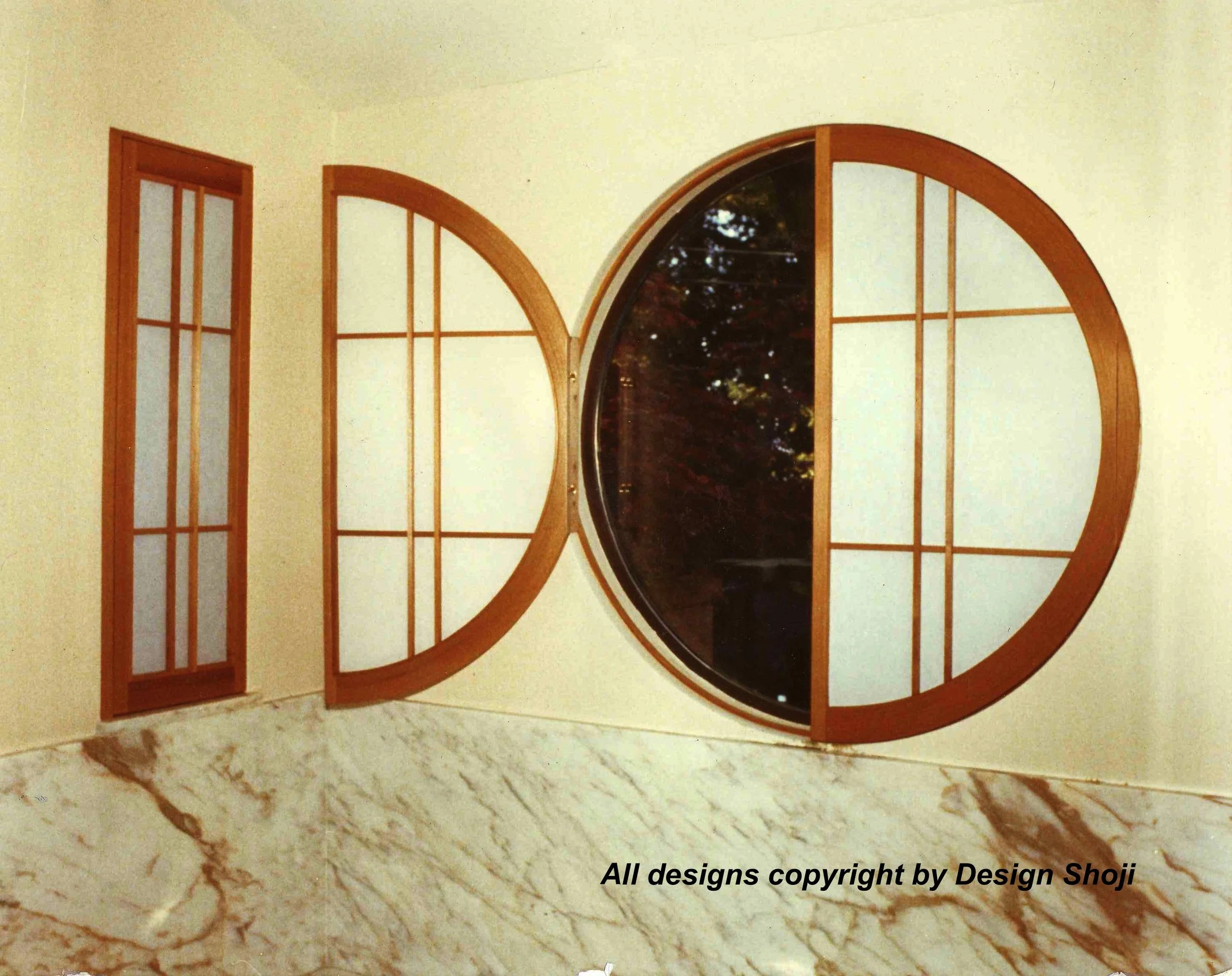Our best work you’ll never see
One of the strangest parts of our job is that if we do it right, chances are, you won’t notice it. In Japanese woodworking, the “star” is the joinery and how it accentuates the natural beauty of the wood. As any minimalist designer will tell you, achieving a clean, simple look that is functional can be quite a puzzle — you don’t have much material to work with in which to “hide” the engineering.
Take for example, a shoji panel with curved stiles. Instead of cutting the curve out of a block of wood, at Design Shoji we do a true steam-bent lamination so the wood grain follows the curve. This is a subtle but beautiful fine-woodworking detail our clients appreciate.
We also like to design installations that minimize the hardware seen as much as possible. A Design Shoji trademark is a shoji installation that looks like it “grew” out of your wall with no screws, hardware, or obvious means of attachment showing.
The masterbath windows shown below typify a Design Shoji installation. The shoji panels are mounted inside the window jambs to open up the space as much as possible, while providing complete privacy. A carefully laid out grid pattern gives the two shoji screens a similar feel, despite the different size and shape of the frames. Most importantly, the round shoji mounted within the jamb really accentuate the circular window.
Trim behind prevents any light line around the shoji, and hidden hardware allows for the shoji screens to be opened when the view is desired. The shoji panels are simple to operate while the installation is hardware carefully hidden to accentuate the clean lines of these windows.
From Brian’s experience as a general contractor, we know all of the hardware still needs to be easily accessible should any panels need to be removed later. After 27 years of installations in the field, we’ve come up with systems for attaching our shoji that are nearly invisible, yet durable and practical.
And then there’s custom hardware. This is where we really have fun. We’ve worked on sliding grids within one shoji panel, hidden locks and peepholes, or details like slide-pivot panels with concealed hardware. Working with exotics is a huge help here as the wood is so hard we can incorporate more cuts into it without risking breakage. It’s very satisfying to come up with a solution where none has existed before. That’s what continues to intrigue us after all these years: each project is a new puzzle to be solved.
So please, keep those unusual requests coming. Oddly enough, we like working on all the little details you probably won’t see.

